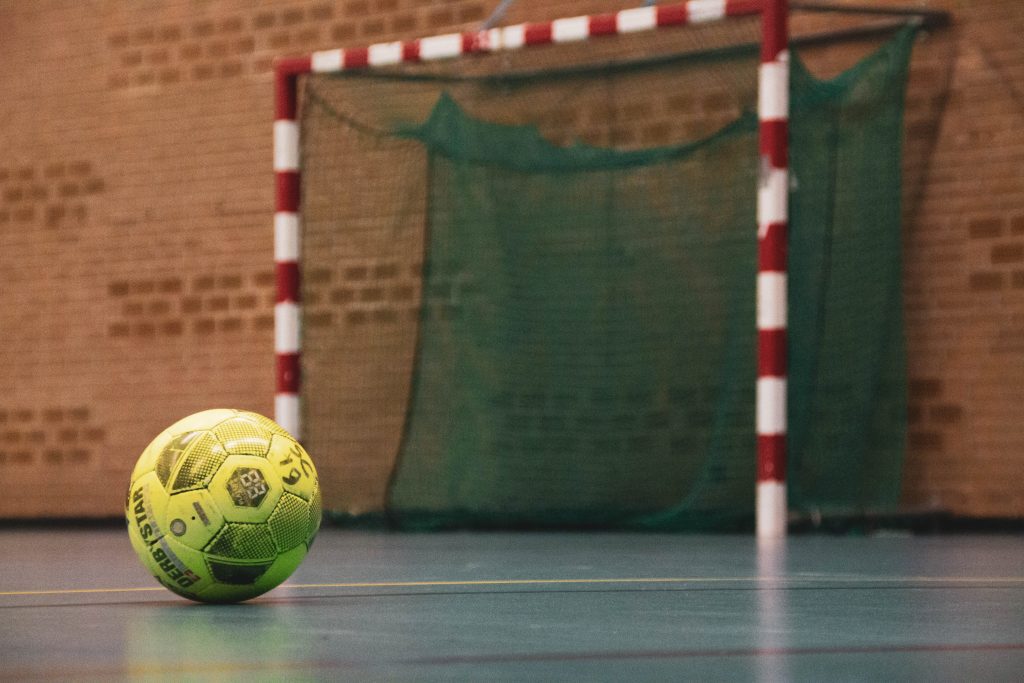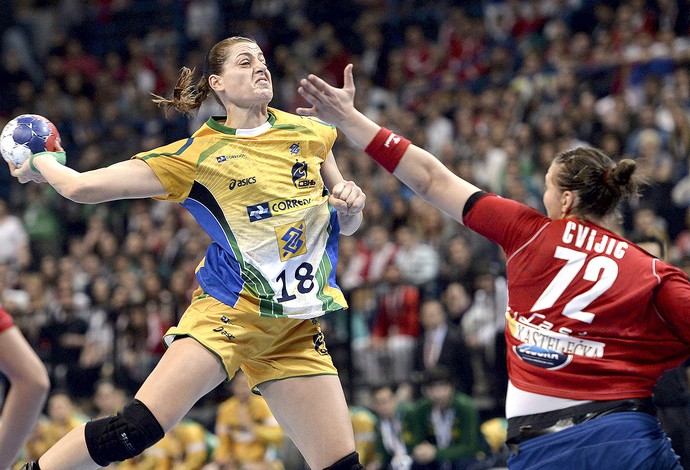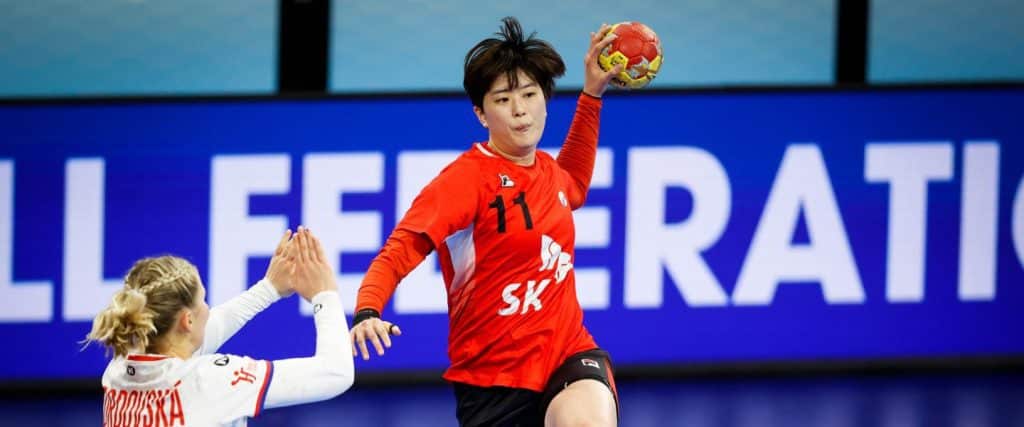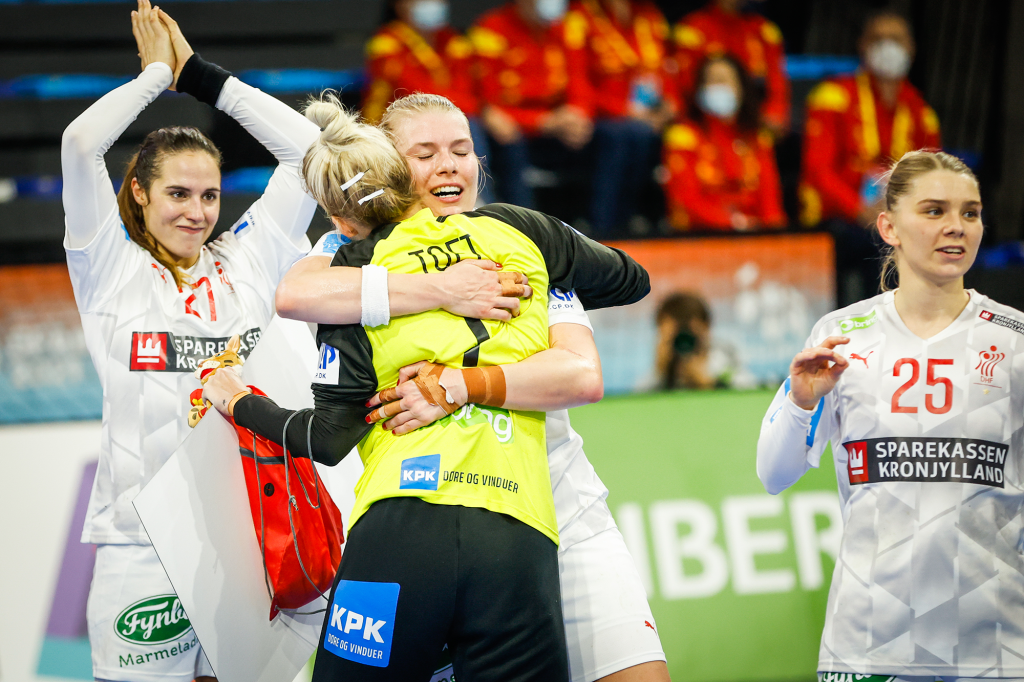Adverts
The Women's World Handball Championship is an international celebration of sporting excellence that takes place every two years, bringing together the world's leading women's teams, and in 2023 the tournament is scheduled to take place between November 29th and December 17th.
This prestigious sporting event is a production of the International Handball Federation (IHF) and figures prominently on the global sporting stage. In addition to being a competition ground, we are talking here about a stage that gives life to fierce rivalries and memorable achievements.
In this article, we will embark on a journey through the history of sport and competition, delving into the world of elite women's handball. Additionally, we will shed light on the 2023 edition of the Women's World Handball Championship, providing insights on how to follow the exciting contests. Get ready for a complete immersion in the world of high-level women's handball!
See what you will find while reading:
The emergence of handball
Handball is a sport that emerged at the beginning of the 20th century, in Europe, more precisely in Germany and Denmark. It is believed that the sport evolved from similar field games, such as football and rugby, adapted to be played indoors, such as sports halls.
The first records of handball date back to 1906, when a German teacher named Karl Schelenz introduced the sport to a school in the city of Berlin. In its initial form, handball was played with 11 players on each side and rules that were slightly different from those of today. However, it soon became popular in schools and sports clubs, spreading throughout Europe.
An important change in the history of handball occurred in 1917, when the German Gymnastics Federation adopted the sport and organized the first national handball tournament. In this tournament, handball started to be played with seven players on each side, as it is known today, and the rules began to consolidate.

Handball quickly spread to other European countries, such as Sweden, Norway, Austria and Czechoslovakia, and in 1920, it was included in the Antwerp Olympic Games as an exhibition sport. In 1932, at the Los Angeles Olympic Games, handball was again presented as an exhibition sport, gaining even more visibility.
It was only after the Second World War that handball gained prominence as an official sport. The International Handball Federation (IHF) was founded in 1946, establishing standardized rules for the sport and, since then, handball has grown in popularity around the world, becoming an official Olympic sport after the Munich Games in 1972. .
Currently, handball is played in many countries and is known for its fast dynamics, intensity and constant action, both in court and sand versions. Sport has become an important part of the global sporting landscape and continues to evolve and develop at all levels of competition.
The popularization of sport among women
The popularization of handball among women is a significant part of the sport's history. Initially, handball was mainly played by men, but over time, women also began to get involved and contribute to the growth of the sport.
In the beginning, women's handball was greatly underestimated compared to men's, and women had to face challenges to gain acceptance and respect in the sporting world. However, over the decades, the athletes' determination and recognition of their skill and passion for the game helped change this perception.

The inclusion of women's handball in the 1976 Olympic Games in Montreal was an important milestone. This gave players visibility and inspired more women to participate in the sport. As international tournaments and club championships became more common, female athletes had the opportunity to compete at a high level and develop their talent.
Furthermore, handball began to be promoted in schools as a sporting option for girls, contributing to increased interest and participation in the sport from an early age. The creation of women's handball leagues, both national and international, also played a key role in popularizing the sport.
The presence of icons and role models in women's handball, such as renowned players and champions, has helped attract more attention and inspired generations of young women to get involved in the sport. Increasing media visibility, thanks to game broadcasts and journalistic coverage, also boosted the growth of women's handball.
Today, women's handball is a prominent sporting discipline, with competitive teams all over the world, so much so that we have the Women's Handball World Championship every two years. Women continue to reach levels of excellence in the sport, showing that handball is an exciting, dynamic and accessible game for everyone, regardless of gender.
Is there a difference between men's and women's handball?
The answer is yes, there are notable differences between men's handball and women's handball, although the game itself and most of the rules are essentially the same. The main differences are related to rhythm, physical strength and some specific rules. Here are some of the most common distinctions:
- Physical strength: Men's handball players can be physically stronger than women's handball players. This can result in more powerful throws and more intense shocks during the game;
- Speed: Men's handball tends to be faster than women's, with players reaching higher speeds and moving more nimbly. This is related to the strength and speed of male players;
- Ball size: The ball used in men's handball is slightly larger and heavier compared to the ball in women's handball. This can affect the style of play and the way the ball is handled;
- Game duration: In many cases, men's handball matches last slightly longer than women's handball matches. This may vary depending on local competitions and regulations;
- Punctuation: Due to the strength of the male players, scores in men's handball games often feature more goals than women's handball games;
- Specific rules: Although most of the rules are the same for both sexes, there are some gender-specific rules, mainly related to court size and goalkeeping area. These rules aim to adapt the game to the physical differences between men and women.
It is important to note that, despite these differences, both men's and women's handball have their own qualities and attractions, and both are widely appreciated by their respective audiences.
A little about the history of the Women's World Handball Championship
The Women's World Handball Championship is an international competition that brings together the best women's handball teams in the world. The history of this tournament dates back to the early 1950s, when women's handball began to gain recognition and popularity on a global level.

The first edition of the Women's World Handball Championship took place in 1957, in the city of Yugoslavia, now Serbia, and nine countries participated in the tournament: Austria, Denmark, Romania, Yugoslavia, Czechoslovakia, Poland, Hungary, Sweden and West Germany. In the final, Czechoslovakia took the title after defeating Hungary 7-1.
In the initial years, the tournament was held every four years, however, from the 1990s onwards, the frequency of the championship increased, starting to take place every two years. Over time, the number of participating teams grew significantly, making the tournament more competitive and global.
The Women's Handball World Championship played a crucial role in the development of the sport and in promoting gender equality in the sporting world, as more nations began to invest in women's handball and develop their teams, the competition became more diverse and representative of different regions of the world.
Furthermore, the tournament provided the rise of several women's handball legends and presented the public with great rivalries and exciting moments throughout its history. The competition not only raised the status of women's handball, but also helped strengthen women's presence in the sport at the highest level.
Teams qualified for the 2023 edition
The 2023 Women's World Handball Championship is scheduled to be held from November 29 to December 17, and will be co-hosted by three nations: Denmark, Sweden and Norway.
The first phase of the tournament will feature the participation of 32 teams and will take place in six cities equally distributed among the host countries: Gothenburg and Helsingborg, in Sweden; Stavanger and Trondheim, in Norway; and Fredrikshamn and Herning in Denmark. In total, there will be 112 matches and to check the match calendar visit the official website of the International Handball Federation (IHF).

Meet the qualified teams:
- Hosts: Denmark (DEN), Norway (NOR), Sweden (SWE);
- Africa: Angola (ANG), Cameroon (CMR), Congo (CGO), Senegal (SEN);
- Asia: Islamic Republic of Iran (IRI), Japan (JPN), Kazakhstan (KAZ), People's Republic of China (CHN), Republic of Korea (KOR);
- Europe: Croatia (CRO), Czech Republic (CZE), France (FRA), Germany (GER), Hungary (HUN), Montenegro (MNE), Netherlands (NED), Poland (POL), Romania (ROU), Serbia ( SRB), Slovenia (SLO), Spain (ESP), Ukraine (UKR);
- North America and the Caribbean: Greenland (GRL);
- South and Central America: Argentina (ARG), Brazil (BRA), Chile (CHI), Paraguay (PAR);
- Wild Card: Austria (AUT), Iceland (ISL).
How to follow the Women's World Handball Championship 2023 games
The options for following the 2023 Women's World Handball Championship are varied and depend on your geographic location. Game broadcast availability varies depending on the country you are in. If you are located in one of the three countries hosting the event, you will have the opportunity to purchase tickets and watch the games in person. However, even if you are far from Sweden, Norway and Denmark, you can still follow the matches through online broadcasts.
Some countries will have access to all games through official IHF YouTube channel. In other nations, broadcast rights have been acquired by television channels and streaming services, meaning games will be able to be watched through these platforms. In Brazil, for example, the streaming platform Zapping exclusively acquired the broadcast rights to the 2023 Women's Handball World Championship, becoming the only option for online access to the games.
It is advisable to check the schedules of ESPN and other broadcast channels and TV stations in your region to see if any of the games on the tournament schedule will be broadcast. Another alternative to watching all the main handball events online for free and from anywhere is to use ExpressVPN to connect to a secure server corresponding to the desired broadcaster region.
Did you like this content?
The 2023 Women's Handball World Championship is undoubtedly an incredibly exciting sporting event that captivates the attention of passionate handball fans around the world. Although following the games online may require some research, believe me, it will be worth it to witness the intense clashes of the 26th edition of this tournament, which is highly anticipated by the public. So, make the most of this championship and support your favorite team fervently, the most important thing is not to miss the opportunity to follow this exciting sporting event!




